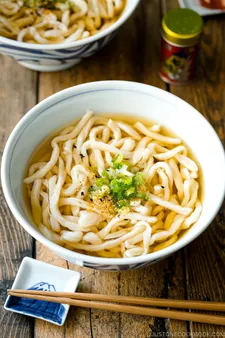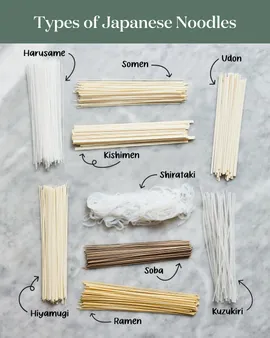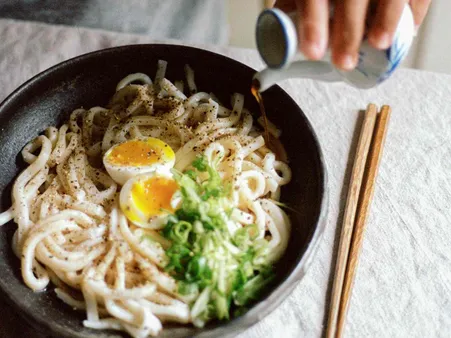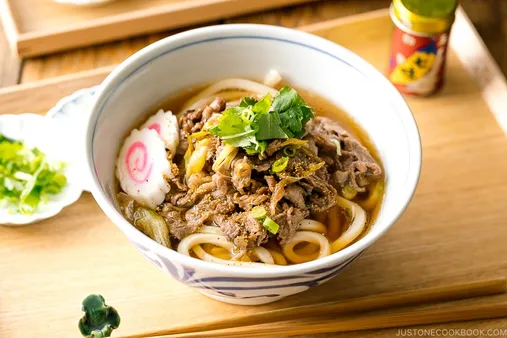Table of Contents
Welcome to Tauhuichiban, your ultimate destination for culinary adventures. Today, we embark on a tantalizing journey into The secrets of Japanese ramen and udon making. These beloved dishes have captivated taste buds worldwide with their rich flavors and intricate textures. In this comprehensive guide, we'll unveil the techniques and tips you need to master the art of ramen and udon making at home. From selecting the finest ingredients to assembling the perfect bowl, we'll guide you through every step of the process. So, prepare your chopsticks and get ready to discover the secrets of Japanese ramen and udon making with tauhuichiban.

The Secrets of Japanese Ramen and Udon Making Revealed
I. The Secrets of Japanese Ramen and Udon Making
Selecting the Right Ingredients
The first step in making ramen or udon is to select the right ingredients. For ramen, you will need wheat flour, water, salt, and kansui (a type of alkaline water). For udon, you will need wheat flour, water, and salt. The type of flour you use will affect the texture of the noodles. A high-protein flour will result in a chewier noodle, while a low-protein flour will result in a more tender noodle. How To Make Japanese Sushi
Creating the Perfect Broth
The next step is to create the broth. For ramen, the broth is typically made from pork bones, chicken bones, or a combination of the two. It can take several hours to simmer the broth until it is rich and flavorful. For udon, the broth is typically made from dashi, a type of Japanese fish stock. Dashi is made by simmering kelp and bonito flakes in water.
Ramen Broth | Udon Broth |
|---|---|
Pork bones, chicken bones, or a combination of the two | Dashi, a type of Japanese fish stock |
Simmered for several hours | Simmered for a shorter period of time |
Rich and flavorful | Light and delicate |

The Secrets of Japanese Ramen and Udon Making
II. The Art of Ramen Making
Selecting the right ingredients
Noodle | Choose high-quality wheat flour with a high protein content. This will help the noodles to develop a firm and chewy texture. |
|---|---|
Broth | Use a combination of pork, chicken, and vegetables to create a rich and flavorful broth. Don't be afraid to experiment with different flavors and ingredients. |
Toppings | The toppings are what really make a ramen bowl special. Common toppings include chashu pork, boiled eggs, naruto, and scallions. |
Creating the perfect broth
The broth is the heart of a ramen bowl, so it's important to get it right. Start by simmering pork bones, chicken bones, and vegetables in water for several hours. Once the broth is flavorful and rich, strain it and discard the solids. You can then adjust the flavor of the broth by adding soy sauce, miso, or other seasonings.
Making the noodles
Ramen noodles are made from a simple dough of wheat flour, water, and salt. The dough is kneaded and then rolled out into thin sheets. The sheets are then cut into noodles and boiled. The noodles should be cooked al dente, so that they are slightly firm to the bite.
Assembling the ramen
To assemble a ramen bowl, start by adding a few spoonfuls of broth to a bowl. Add the noodles, toppings, and any other desired ingredients. Serve immediately and enjoy!Here are some tips for making the perfect ramen:- Use high-quality ingredients. The quality of your ingredients will directly impact the taste of your ramen.- Don't overcook the noodles. The noodles should be cooked al dente, so that they are slightly firm to the bite.- Be generous with the toppings. The toppings are what really make a ramen bowl special, so don't be afraid to load them on.- Experiment with different flavors and ingredients. There are many different ways to make ramen, so feel free to experiment with different ingredients and flavors to find what you like best.

The Art of Ramen Making
III. The Art of Udon Making
Selecting the right ingredients is crucial for making the perfect udon. The flour should be high-quality and have a high protein content. The water should be cold and filtered. The salt should be fine-grained and evenly distributed throughout the dough.
Creating the perfect dough is an art form. The dough should be kneaded until it is smooth and elastic. It should not be too sticky or too dry. The dough should be rested for at least 30 minutes before it is rolled out.
Ingredient | Amount |
|---|---|
Flour | 2 cups |
Water | 1 cup |
Salt | 1 teaspoon |
Making the noodles is a delicate process. The dough should be rolled out into thin sheets. The sheets should be cut into thin strips. The noodles should be cooked in boiling water for a few minutes. They should be drained and rinsed with cold water.
Assembling the udon is the final step. The noodles should be placed in a bowl. The broth should be poured over the noodles. The toppings should be added to the bowl. The udon is now ready to be enjoyed.

The Art of Udon Making
IV. Tips for Making the Perfect Ramen and Udon
Use high-quality ingredients
Follow the instructions carefully
Be patient and don't rush the process
Experiment with different flavors and toppings
Ramen | Udon |
|---|---|
Made with wheat flour, water, salt, and kansui (a type of alkaline water) | Made with wheat flour, water, and salt |
Has a thin, curly noodle | Has a thick, chewy noodle |
Typically served in a broth made from pork, chicken, or seafood | Typically served in a broth made from dashi (a type of Japanese stock) |

Tips for Making the Perfect Ramen and Udon
V. Conclusion
With patience, practice, and a touch of creativity, you can master the art of Japanese ramen and udon making. Experiment with different flavors and toppings to create your own unique dishes. And don't be afraid to ask for help from experienced chefs or fellow ramen and udon enthusiasts. The more you learn, the better your ramen and udon will become. So what are you waiting for? Get started today and discover the secrets of Japanese ramen and udon making!